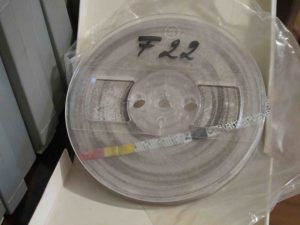 Recently the call came to the Sydney office of PARADISEC that a collection of tapes had arrived in Melbourne that needed some cleaning (see the earlier post here). The tapes were from Madang in Papua New Guinea and had been recorded in the 1960s. They contained valuable and rare records of language and music of PNG.
Recently the call came to the Sydney office of PARADISEC that a collection of tapes had arrived in Melbourne that needed some cleaning (see the earlier post here). The tapes were from Madang in Papua New Guinea and had been recorded in the 1960s. They contained valuable and rare records of language and music of PNG.
When the tapes arrived they were visibly covered in a white mould and so the PARADISEC audio preservation team moved into action to remediate the tapes ready for digitisation.
Mould is a common form of contamination of magnetic analogue tape that creates problems as the infected tape will not give a clear signal when played back. Even a small speck of dust or mould can cause a gap between the tape and the head resulting in a drop out of sound.
The first task was to isolate the tapes so that the mould could not sprea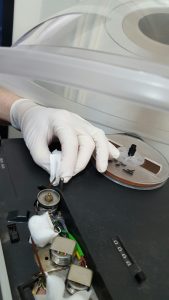 d to other media resources. The tapes were placed in airtight plastic bags and stored in the remediation room. Then the cleaning process could begin.
d to other media resources. The tapes were placed in airtight plastic bags and stored in the remediation room. Then the cleaning process could begin.
Exposure to mould and dust can be damaging to your health, particularly for respiratory problems and allergies so the audio preservation team uses gloves, a filter mask and a fume hood to ensure safe working conditions. The cleaning procedure is simple enough: gently hold a lint free cloth with a solution of Cetrimide solution to both sides of the tape as it runs through a tape machine. The difficulty is to do this with fragile tape making sure you use enough pressure to clean it but not too much so that you damage the tape, especially watching out for splices that can weaken the strength of the tape.
This tape labelled F22 is now clean and you can see the difference in comparison with the condition it was in above.
Once cleaned the tapes are placed in a vacuum oven. It works partly by heating to 40˚C and through a process in which the air pressure inside the oven is reduced slightly and then allowed to bleed back in through a tube of silicon beads that absorb moisture. This means the air inside gets drier and drier and the tapes are allowed to sit in the oven for hours or even days thus aiming to kill any remaining mould, evaporate residual cleaning fluid thus stabilising the condition of the tape.
Now the tape is cleaned it is ready for digitisation, but it is important to recognise that the tape is fragile and possibly made more so by the cleaning process itself. There may be only one chance at recovery and tapes can disintegrate as they are processed through the tape machine. Fortunately, most of the tapes from Madang were of pleasing quality once they had been cleaned and we could continue through the digitisation process successfully, thus saving the precious records from PNG.
However, we encountered some problematic tapes in this collection that showed signs of serious deterioration creating further challenges for the audio preservation workers.
‘Vinegar Syndrome’ is a condition of hydrolysis where the deterioration of the tape results in a chemical breakdown of the tape binder layer. Some of the tapes in this collection suffered from this condition, easily identified by its pungent vinegar odour due to the presence of acetic acid. Whilst cold dry storage is the best defence, once this form of degradation has started it cannot be reversed and tends to speed up over time. It is vital therefore to digitise this material as soon as possible even though this process is problematic and time consuming as Vinegar Syndrome causes shrinkage, embrittlement and the break down of the tape binder. Tape binder is responsible for holding the magnetic particles onto the tape and once it loses integrity it can make the tape unplayable.
When digitising these tapes, we noticed a distinct deterioration in sound quality. The physical warping and cupping of the tape meant that the tape was not evenly distributed over the head causing drop in and out of sound and uneven audio distribution. Some of the tapes were also not able to be fully processed as the weakness caused continual breakages and splitting which eventually rendered the tape unplayable. It took a lot of time and careful monitoring of the situation to nurse these tapes through the machine to digitise what we could of the valuable sound resources.
Overall the whole process reminded us all of the importance of digitisation and safe storage conditions in saving and maintaining invaluable resources before they are unplayable and the precious information they hold is lost forever. If you are holding collections or you are collecting now be sure to consider safe storage and archiving as soon as possible to ensure the longevity of your data.
IASA Technical Committee, Guidelines on the Production and Preservation of Digital Audio Objects, ed. by Kevin Bradley. Second edition 2009. (= Standards, Recommended Practices and Strategies, IASA-TC 04). International Association of Sound and Audiovisual Archives.
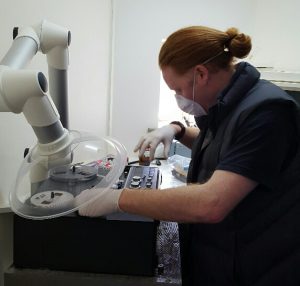
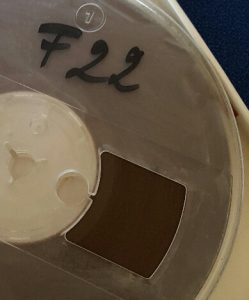
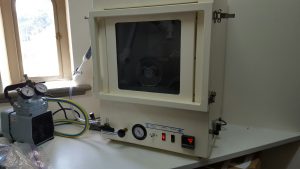
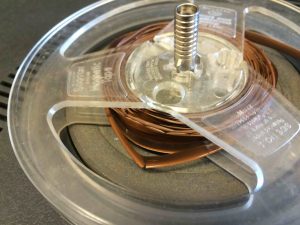
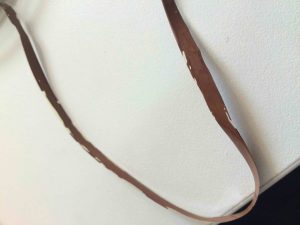
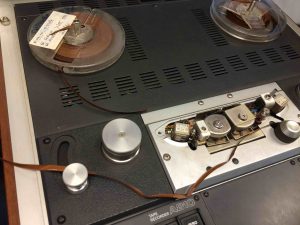
 Follow
Follow